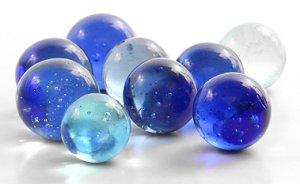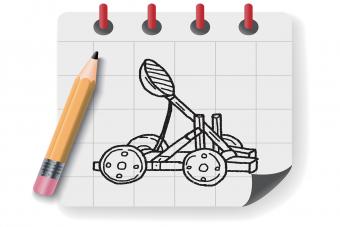
Perfect for science fairs, physics lessons, or just for fun, marble rollercoaster design challenges can be a great way to indulge in a love for roller coasters without needing engineering expertise or a theme park budget.
Building Marble Coasters
Science teachers may assign roller coaster model projects for science fairs or physics units, and building your own roller coaster can be a fun and challenging hobby. Building a successful marble rollercoaster design, however, takes more than a love of thrill rides.
Materials
A marble rollercoaster is a track layout designed for a marble to roll through as the vehicle. The best materials to use for such a project are those that can support the marble easily with the least amount of friction, therefore letting it roll through the track unimpeded. Most marble tracks either use a trough or dual rails for the marble to rest on. To make the track even smoother, it may be coated with foil or a lubricant to reduce friction. Popular construction materials include:
- Pipes, either solid or cut in half to form a trough
- Sturdy wires that can be curved into parallel rails
- Popsicle sticks or balsa wood that can be built into troughs
- Wood molding sections, either curved or angular
The struts of the coaster need to be similarly sturdy but flexible enough to accommodate the force of the marble traveling along the track. The support structure at the base of the design must be strong enough to support the weight of the track and any stresses from the marble's motion.
Track Design
When creating a marble rollercoaster design, it is vital to understand the physics of roller coasters. The concepts of kinetic and potential energy, friction, mass, and acceleration are what govern the behavior of a roller coaster, and knowing how different forces interact can help coaster designers create impressive and intricate track layouts.
Tips for designing a marble track layout include:
- The maximum height will be at the beginning of the track where the marble is released; each successive height maximum should be progressively lower so the marble can coast through the track successfully.
- Keep the marble descending after each element such as a curve, loop, or slight hill so it continues to have enough speed to complete the course.
- Add design interest by creating a compact, interwoven track with multiple elements such as loops, curves, hills, dips, and helixes.
- Stop the marble at the end of the track with a gentle ascent or by falling into a cup or other catchments to ensure it does not fly off the end of the track.
Building Tips

After the track layout has been designed, it must be built carefully so the marble can complete the course easily.
- Plan the layout thoroughly before beginning construction.
- If the marble coaster is for a science fair or class project, follow all size and materials guidelines to prevent inadvertent disqualification.
- Build each element separately and test successive elements in sequence before building the next section of track.
- Allow plenty of time for each track section to stabilize and any glue or paint to dry before testing the marble.
- Understand how to adjust the track design if necessary after preliminary tests.
- Save decorative accents until after the track design is complete - the basic track is more important than the color of the building materials or miniature trees to make it "real."
Winning Tips
To create a stunning project or model, add extra effort and details such as:
- A motorized lift system to return the marble to the top of the track after each run.
- A longer track length with multiple elements to demonstrate acute knowledge of the forces necessary for a marble rollercoaster to run.
- Intertwined elements, such as a curve around a drop or a track section that goes through a loop.
- A visually appealing design that is painted a uniform color, named, and otherwise decorated appropriately.
- Additional project materials such as a statistics sheet on the design's specifications, a brief report on the history of the roller coaster, carefully drawn design blueprints from different angles, or pictures of roller coasters with similar track elements.
Marble Rollercoaster Design Kits

Coaster fanatics who aren't interested in building a marble coaster from scratch can consider marble coaster kits that include track and structural segments as well as detailed instructions for designing successful layouts. Kits can cost from $20 to $150 or higher depending on the manufacturer, design complexity, size, and extra details such as battery operated lifts or multiple potential layouts. Kits can even be combined to create larger, more intricate designs.
Online retailers offering a variety of marble rollercoaster kits include:
Note: Kit designs may not be acceptable for science fair or classroom projects.
Experimenting with marble rollercoaster design can be a fun way to learn more about roller coasters or to indulge in a passion for coasters without a theme park getaway. With proper design and construction, the coaster will be a winner whether it is part of a science fair or just a personal project, and the thrill of completing a successful design is as powerful as any roller coaster ride.







